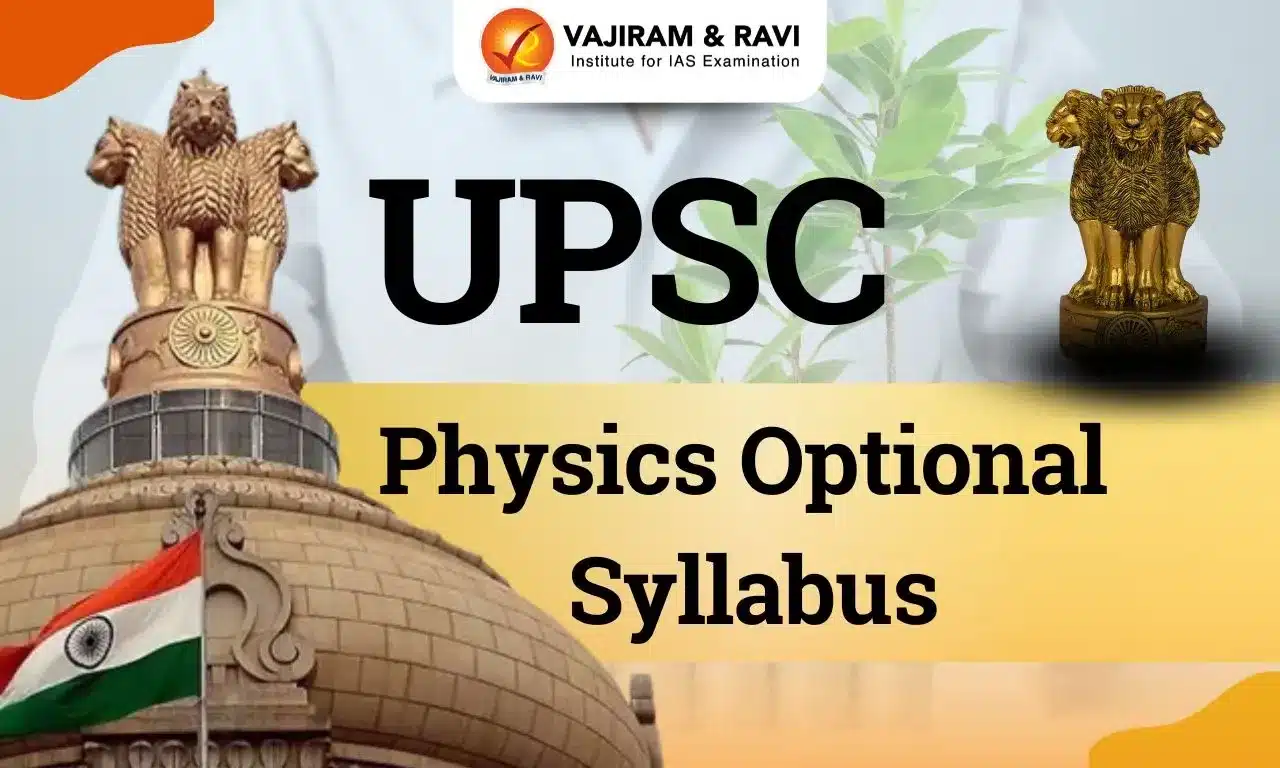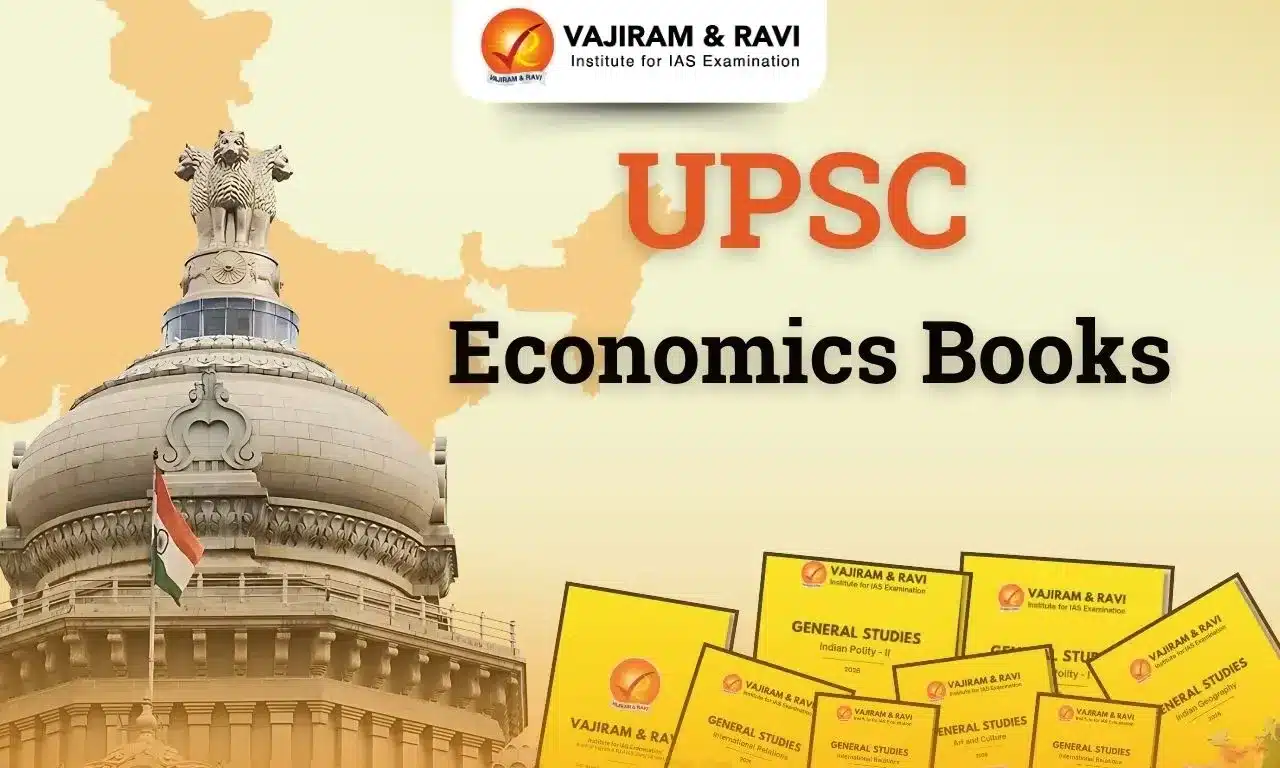Like other optional subjects, the UPSC Physics optional syllabus also consists of two papers, Paper 1 and Paper 2, each with 250 marks. It is a core science subject with almost negligible overlap with General Studies Mains Papers. This article covers the UPSC Physics optional syllabus for both Paper 1 and Paper 2, a few tips on how to prepare for this subject, and important topics of the subject.
What is UPSC Physics Optional Syllabus?
The optional paper's weightage in the UPSC Mains exam is 500 marks, that is, 250 marks for each paper, so it is extremely important to give optimum time for optional papers to secure a good rank in the UPSC exam. UPSC Physics optional is a quite good choice for aspirants who graduated in science with physics as a subject. If adequately and systematically prepared, this subject has the potential to be a scoring subject. The UPSC Physics Optional syllabus for Paper 1 has five sections that deal with classical physics, and Paper 2 has four sections that deal with modern physics.
UPSC Physics Syllabus for Paper 1
1. (a) Mechanics of Particles:
Laws of motion; conservation of energy and momentum, applications to rotating frames, centripetal and Coriol is accelerations; Motion under a central force; Conservation of angular momentum, Kepler's laws; Fields and potentials; Gravitational field and potential due to spherical bodies, Gauss and Poisson equations, gravitational self-energy; Two-body problem; Reduced mass; Rutherford scattering; Centre of mass a laboratory reference frames.
(b) Mechanics of Rigid Bodies:
System of particles; Centre of mass, angular momentum, equations of motion; Conservation theorems for energy, momentum, and angular momentum; Elastic and inelastic collisions; Rigid body; Degrees of freedom, Euler's theorem, angular velocity, angular momentum, moments of inertia, theorems of parallel and perpendicular axes, equation of motion for rotation; Molecular rotations (as rigid bodies); Di and tri-atomic molecules; Processional motion; top, gyroscope.
(c) Mechanics of Continuous Media:
Elasticity, Hooke's law and elastic constants of isotropic solids and their inter-relation; Streamline (Laminar) flow, viscosity, Poiseuille's equation, Bernoulli's equation, Stokes' law and applications.
(d) Special Relativity:
Michelson-Morley experiment and its implications; Lorentz transformations-length contraction, time dilation, the addition of relativistic velocities, aberration, and Doppler effect, mass-energy relation, simple applications to a decay process; Four-dimensional momentum vector; Covariance of equations of physics.
2. Waves and Optics:
(a) Waves:
Simple harmonic motion, damped oscillation, forced oscillation and resonance; Beats; Stationary waves in a string; Pulses and wave packets; Phase and group velocities; Reflection and Refraction from Huygens' principle.
(b) Geometrical Optics:
Laws of reflection and refraction from Fermat's principle; Matrix method in paraxial optics-thin lens formula, nodal planes, system of two thin lenses, chromatic and spherical aberrations.
(c) Interference:
Interference of light-Young's experiment, Newton's rings, interference by thin films, Michelson interferometer; Multiple beam interference, and Fabry-Perot interferometer.
(d) Diffraction:
Fraunhofer diffraction-single slit, double slit, diffraction grating, resolving power; Diffraction by a circular aperture and the Airy pattern; Fresnel diffraction: half-period zones and zone plates, circular aperture.
(e) Polarization and Modern Optics:
Production and detection of linearly and circularly polarized light; Double refraction, quarter wave plate; Optical activity; Principles of fibre optics, attenuation; Pulse dispersion in step index and parabolic index fibres; Material dispersion, single mode fibres; Lasers-Einstein A and B coefficients; Ruby and He-Ne lasers; Characteristics of laser light-spatial and temporal coherence; Focusing of laser beams; Three-level scheme for laser operation; Holography and simple applications.
3. Electricity and Magnetism:
(a) Electrostatics and Magnetostatics:
Laplace and Poisson equations in electrostatics and their applications; Energy of a system of charges, multiple expansion of scalar potential; Method of images and its applications; Potential and field due to a dipole, force and torque on a dipole in an external field; Dielectrics, polarization; Solutions to boundary-value problems-conducting and dielectric spheres in a uniform electric field; Magnetic shell, uniformly magnetized sphere; Ferromagnetic materials, hysteresis, energy loss.
(b) Current Electricity:
Kirchhoff's laws and their applications; Biot-Savart law, Ampere's law, Faraday's law, Lenz' law; Self-and mutual-inductances; Mean and r m s values in AC circuits; DC and AC circuits with R, L, and C components; Series and parallel resonances; Quality factor; Principle of transformer.
4. Electromagnetic Waves and Blackbody Radiation:
Displacement current and Maxwell's equations; Wave equations in vacuum, Pointing theorem; Vector and scalar potentials; Electromagnetic field tensor, covariance of Maxwell's equations; Wave equations in isotropic dielectrics, reflection and refraction at the boundary of two dielectrics; Fresnel's relations; Total internal reflection; Normal and anomalous dispersion; Rayleigh scattering; Black body radiation and Planck's radiation law, Stefan - Boltzmann law, Wien's displacement law and Rayleigh-Jeans' law.
5. Thermal and Statistical Physics:
(a) Thermodynamics:
Laws of thermodynamics, reversible and irreversible processes, entropy; Isothermal, adiabatic, isobaric, isochoric processes and entropy changes; Otto and Diesel engines, Gibbs' phase rule and chemical potential; vander Waals equation of state of a real gas, critical constants; Maxwell-Boltzman distribution of molecular velocities, transport phenomena, equi-partition, and virial theorems; Dulong-Pet it, Einstein, and Debye's theories of specific heat of solids; Maxwell relations and applications; Clausius- Clapeyron equation; Adiabatic de-magnetisation, Joule-Kelvin effect and liquefaction of gases.
(b) Statistical Physics:
Macro and micro states, statistical distributions, Maxwell-Boltzmann, Bose-Einstein, and Fermi-Dirac distributions, applications to specific heat of gases and black body radiation; Concept of negative temperatures.
UPSC Physics Optional Syllabus - Paper 2
1. Quantum Mechanics:
Wave-particle duality; Schroedinger equation and expectation values; Uncertainty principle; Solutions of the one-dimensional Schroedinger equation for a free particle (Gaussian wave-packet), particle in a box, particle in a finite well, linear harmonic oscillator; Reflection and transmission by a step potential and by a rectangular barrier; Particle in a three-dimensional box, density of states, free electron theory of metals; Angular momentum; Hydrogen atom; Spin half particles, properties of Pauli spin matrices.
2. Atomic and Molecular Physics:
Stern-Gerlach experiment, electron spin, fine structure of hydrogen atom; L-S coupling, J-J coupling; Spectroscopic notation of atomic states; Zeeman effect; Frank Condon principle and applications; Elementary theory of rotational, vibrational and electronic spectra of diatomic molecules; Raman effect and molecular structure; Laser Raman spectroscopy; Importance of neutral hydrogen atom, molecular hydrogen and molecular hydrogen ion in astronomy; Fluorescence and Phosphorescence; Elementary theory and applications of NMR and EPR; Elementary ideas about Lamb shift and its significance.
3. Nuclear and Particle Physics:
Basic nuclear properties-size, binding energy, angular momentum, parity, magnetic moment; Semi-empirical mass formula and applications, mass parabolas; Ground state of deuteron, magnetic moment and non-central forces; Meson theory of nuclear forces; Salient features of nuclear forces; Shell model of the nucleus - successes and limitations; Violation of parity in beta decay; Gamma decay and internal conversion; Elementary ideas about Mossbauer spectroscopy; Q-value of nuclear reactions; Nuclear fission and fusion, energy production in stars; Nuclear reactors.
Classification of elementary particles and their interactions; Conservation laws; Quark structure of hadrons; Field quanta of electro weak and strong interactions; Elementary ideas about unification of forces; Physics of neutrinos.
4. Solid State Physics, Devices and Electronics:
Crystalline and amorphous structure of matter; Different crystal systems, space groups; Methods of determination of crystal structure; X-ray diffraction, scanning, and transmission electron microcopies; Band theory of solids - conductors, insulators and semiconductors; Thermal properties of solids, specific heat, Debye theory; Magnetism: para and ferro magnetism; Elements of superconductivity, Meissner effect, Josephson junctions, and applications; Elementary ideas about high-temperature superconductivity.
Intrinsic and extrinsic semiconductors; pn-p and n-p-n transistors; Amplifiers and oscillators; Op-amps; FET, JFET, and MOSFET; Digital electronics-Boolean identities, De Morgan's laws, logic gates, and truth tables; Simple logic circuits; Thermostats, solar cells; Fundamentals of microprocessors and digital computers.
How to Prepare UPSC Physics Optional Syllabus?
Before starting preparing for the Physics optional, go through the UPSC Physics syllabus and previous year's questions properly so that one gets an idea about how to prepare and what is the demand of this optional subject.
- Refer to one standard book for each section of the syllabus. For example, refer to Satya Prakash's book for the electromagnetics section and do selective reading strictly according to the syllabus.
- Have summary notes of all key topics and formulas for revision and consolidation. Memorize formulas and make separate notes for the same for the last-minute revision.
- Practice is the key to ace this optional subject. Practising numerical and solving derivations on a daily basis will fetch you more marks.
- Do all solved examples and read chapters that are directly mentioned in the UPSC Physics syllabus or if such implicit topics have been asked in previous PYQs over the last 25 years. (Use the Unsolved booklet available in the market).
- Answer writing tips: Properly analyze the last 10-15 years of UPSC previous year questions and the practice. In the introduction, write two lines defining the key topics of the physics in question. Finish with important facts/applications/graphs. To make answers more presentable, all graphs used in the question must be labelled.
Books to Prepare UPSC Physics Optional Syllabus
The below table mentions the booklist for both papers 1 and 2 of UPSC physics optional. Aspirants can refer to these books to prepare the UPSC physics optional syllabus comprehensively.
| Booklist for Paper 1 | Booklist for Paper 2 |
|
- Mechanics: JC Upadhyay's book for all topics mentioned in the syllabus and solved examples of DS Mathur's book. - Electromagnetism: Satya Prakash book - Thermodynamics: Garg, Bansal, Ghosh book. - Optics: Brijlal and Subramaniam. |
- Quantum Mechanics: HC Verma - Atomic and Molecular Physics: Rajkumar Book - Nuclear and Particle Physics: SB Patel mainly and selective value addition from DC Tayal book based on PYQs topics. - Solid State Physics: Puri and Babbar |
Important Topics in UPSC Physics Syllabus
Every topic of Physics optional is important in itself so one needs to prepare the whole syllabus comprehensively. Here are some important topics from both Paper 1 and Paper 2.
- Paper I: Classical Mechanics, Wave Motion, Electricity and Magnetism, Geometric Optics, Electromagnetic Theory, Thermal Physics, Special Relativity, Statistical Physics, Physical Optics.
- Paper II: Quantum physics, Electronics, Modern physics.
| Other Related UPSC Optional Syllabus | ||
|---|---|---|
|
UPSC Animal Husbandry & Veterinary Science Optional Syllabus |
|
|
Last updated on November, 2025
→ Check out the latest UPSC Syllabus 2026 here.
→ Join Vajiram & Ravi’s Interview Guidance Programme for expert help to crack your final UPSC stage.
→ UPSC Mains Result 2025 is now out.
→ UPSC Notification 2026 is scheduled to be released on January 14, 2026.
→ UPSC Calendar 2026 is released on 15th May, 2025.
→ The UPSC Vacancy 2025 were released 1129, out of which 979 were for UPSC CSE and remaining 150 are for UPSC IFoS.
→ UPSC Prelims 2026 will be conducted on 24th May, 2026 & UPSC Mains 2026 will be conducted on 21st August 2026.
→ The UPSC Selection Process is of 3 stages-Prelims, Mains and Interview.
→ UPSC Result 2024 is released with latest UPSC Marksheet 2024. Check Now!
→ UPSC Prelims Result 2025 is out now for the CSE held on 25 May 2025.
→ UPSC Toppers List 2024 is released now. Shakti Dubey is UPSC AIR 1 2024 Topper.
→ UPSC Prelims Question Paper 2025 and Unofficial Prelims Answer Key 2025 are available now.
→ UPSC Mains Question Paper 2025 is out for Essay, GS 1, 2, 3 & GS 4.
→ UPSC Mains Indian Language Question Paper 2025 is now out.
→ UPSC Mains Optional Question Paper 2025 is now out.
→ Also check Best IAS Coaching in Delhi
Physics Optional Syllabus FAQs
Q1. Is there any change in UPSC syllabus 2026?+
Q2. Will optional be removed from UPSC 2026?+
Q3. What are the subjects for UPSC Prelims 2026?+
Q4. What is the syllabus of UPSC physics?+
Q5. Will UPSC give extra attempts in 2026?+

















